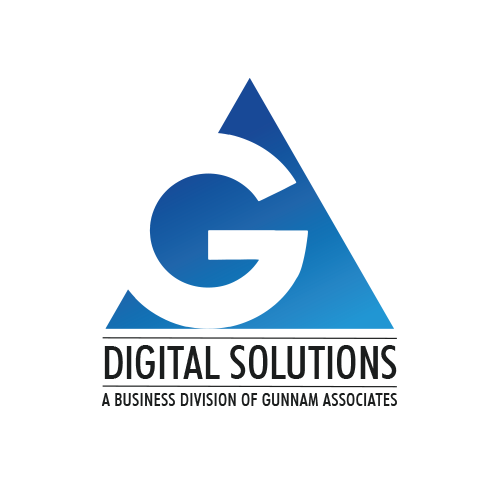We are driven by our Organizational strategy for
‘GA Digital Solutions’ that outlines the journey we embarked, what we want to achieve and what we want to uphold in this process.

Why Prevention is Paramount?
In the face of this pervasive threat, adopting a proactive stance becomes paramount. The adage "prevention is better than cure" holds particularly true in the realm of cybersecurity. While the internet offers boundless opportunities, it's essential to be aware of the risks and take preemptive measures to thwart potential attacks.A Comprehensive Approach to Malware Removal
Protecting your website from malicious threats is paramount in today's digital landscape. At GA Digital Solutions, we understand the importance of maintaining a secure online environment for your business and your visitors. Our Website Malware Removal Services are designed to safeguard your website against cyber threats, ensuring peace of mind and preserving your reputation. With our expert team and cutting-edge technology, we'll swiftly identify and eliminate malware, viruses, and other malicious code, restoring your website's integrity and protecting your valuable data. Trust GA Digital Solutions to keep your website safe and secure – contact us today to learn more about our comprehensive malware removal services.- A comprehensive approach to malware removal
- Signs of Malware infection on the website
- Proactive Measures for Website Malware Prevention
- Website Malware Removal Tools
- Manual Website Malware Removal Steps
- System Restore and Backups
- Seeking Professional Help: How GA Digital Solutions can help
Nowadays, we're all connected online, and that brings lots of good things. But there's also a problem called "malware." It's like a digital bad guy that can cause big trouble.
Malware can sneak into our computers, mess with our information, and create chaos in our online world. The number of these malware problems is getting really high, so it's super important to make our digital defenses stronger than ever.
A. Defining Malware
Malware, short for malicious software, is a broad term encompassing a spectrum of harmful programs designed to infiltrate, exploit, and compromise computer systems. These insidious entities are crafted by cybercriminals with the intent of causing harm, stealing information, or gaining unauthorized access to sensitive data. The umbrella term 'malware' includes various malicious forms, each with its own characteristics and objectives.- Viruses: These are programs that attach themselves to legitimate files or programs and replicate when those files are executed. Viruses can spread rapidly, infecting other files and systems.
- Worms: Self-replicating and autonomous, worms spread across networks, exploiting vulnerabilities to infect multiple devices without requiring user interaction.
- Trojans: Disguised as legitimate software, trojans deceive users into installing them. Once inside a system, they create backdoors for attackers to gain unauthorized access.
- Ransomware: A particularly sinister type of malware, ransomware encrypts files on a victim's system, rendering them inaccessible. Cybercriminals demand a ransom for the decryption key.
B. Common Infection Vectors
Understanding how malware infiltrates systems is crucial for implementing effective preventive measures. Malware can exploit various entry points, and awareness of these infection vectors empowers users to fortify their defenses.- Phishing Attacks: Cybercriminals often use deceptive emails, messages, or websites to trick users into revealing sensitive information such as passwords or financial details.
- Malicious Websites: Visiting compromised or malicious websites can expose users to drive-by downloads, where malware is automatically downloaded and executed without the user's knowledge.
- Trojans: Downloading files from untrustworthy sources or using compromised software can introduce malware onto a user's system.
C. Consequences of Malware Infections
The repercussions of a malware infection can be severe, affecting individuals, businesses, and organizations alike. Understanding the potential consequences underscores the urgency of robust cybersecurity measures.- Data Loss:Malware can corrupt, delete, or encrypt files, leading to irreversible data loss. This is particularly devastating for personal users and businesses storing critical information.
- Identity Theft: Malicious software may harvest sensitive personal information, leading to identity theft and financial fraud.
- System Damage: Some malware is designed to cripple systems, causing operational disruptions, system crashes, or rendering devices unusable.
A website is a digital storefront, a gateway to information, and an essential part of online presence. However, just like physical spaces, digital domains are not immune to unwanted intruders. Recognizing the signs of a malware infection on a website is crucial for preserving its integrity, ensuring user safety, and maintaining a trustworthy online environment.
A. Common Indicators of Malware Presence
- Sluggish Performance:
- Symptom: A sudden drop in website speed, prolonged loading times, or unresponsiveness.
- Explanation: Malware can consume significant resources, causing the website to slow down as it competes for system resources.
- Unexpected Pop-Ups:
- Symptom: The appearance of unexpected, unsolicited pop-up ads or notifications.
- Explanation: Malicious scripts can trigger pop-ups, leading to a disruptive and potentially harmful user experience.
- Unusual Network Activity:
- Symptom: Abnormal spikes in network traffic or unexpected data transfers.
- Explanation: Malware often communicates with external servers or carries out malicious activities, leading to unusual patterns in network behavior.
- Defaced or Altered Content:
- Symptom: Changes in the website's appearance, such as defaced pages, unauthorized ads, or altered content.
- Explanation: Certain malware variants may modify website content to serve the interests of attackers, harm the website's reputation, or spread propaganda.
- Search Engine Warnings:
- Symptom: Users encounter warnings when trying to access the website, indicating potential security risks.
- Explanation: Search engines may flag a website as potentially harmful if it is compromised by malware, deterring visitors and damaging the site's reputation.
B. Staying Vigilant: The Importance of Early Recognition
- Regular Monitoring:
- Action: Implement routine website monitoring tools to track performance metrics, detect anomalies, and receive alerts about potential issues.
- Unexpected Pop-Ups:
- Action: Conduct regular security audits to identify vulnerabilities and potential entry points for malware. Address and patch any weaknesses promptly.
- Unusual Network Activity:
- Action: Encourage users to report any suspicious activities, unexpected pop-ups, or unusual experiences while navigating the website.
- Webmaster Tools:
- Action: Utilize webmaster tools provided by search engines to receive alerts about potential security issues or indications of malware.
- Update and Patch:
- Action:Ensure that all website software, plugins, and extensions are up-to-date with the latest security patches to minimize vulnerabilities.
By staying vigilant and recognizing these early warning signs, website owners and administrators can take prompt action to address potential malware infections, protecting both their digital assets and the trust of their users. In the next segment of our comprehensive guide to malware removal, we'll explore proactive measures for safeguarding websites against these digital threats.
As we continue our journey through the landscape of cybersecurity, it becomes increasingly clear that prevention is the first line of defense against the insidious threat of malware. In this section, we will delve into proactive measures that every user and website administrator should implement to safeguard against malware infiltrations.
A. The Power of Timely Updates
Patch Vulnerabilities: Regularly updating your operating system and installed software is a crucial first line of defense. Software developers release updates and patches to address vulnerabilities that could be exploited by malware. Promptly applying these updates strengthens your system's resilience against potential threats.- Automatic Updates: Enable automatic updates whenever possible to ensure that your system receives the latest security patches without requiring manual intervention. This minimizes the window of opportunity for attackers to exploit known vulnerabilities.
B. Antivirus and Anti-Malware Software
- Reputable Security Solutions: Invest in and regularly update reputable antivirus and anti-malware software. These security solutions act as digital sentinels, scanning files, emails, and websites for malicious content and neutralizing potential threats before they can compromise your system.
- Real-Time Protection: Opt for security software that offers real-time protection, actively monitoring your system for suspicious activities. This proactive approach allows for immediate detection and response to emerging threats.
C. Safe Browsing Habits
Verify Website Authenticity: Before entering personal information or downloading files, ensure that the website is legitimate. Look for HTTPS in the URL, check for a padlock icon in the address bar, and be wary of misspellings or unusual domain names.- Exercise Caution with Email: Be cautious when clicking on links or downloading attachments in emails, especially if they come from unknown or unexpected sources. Verify the legitimacy of the sender before taking any action.
- Download from Trusted Sources: Obtain software, apps, and files from official and reputable sources. Avoid downloading cracked or pirated software, as these often come bundled with malware.
- Use Ad-Blockers: Consider using ad-blocker browser extensions to reduce the risk of encountering malicious advertisements that may lead to drive-by downloads.
D. Think Before You Click
- Hover Over Links: Before clicking on a link, hover your mouse pointer over it to preview the URL. This allows you to verify whether the link leads to the expected destination.
- Verify File Extensions: Be cautious of file extensions, especially executable (.exe) files, in email attachments or downloads. Ensure that the file is from a trusted source and has a legitimate purpose.
As we embark on the mission to rid our digital landscapes of malware, having the right tools at our disposal becomes imperative. In this section, we will explore popular website malware removal tools, shedding light on their features, benefits, and offering guidance on how to effectively deploy them in the battle against malicious software.
A. Antivirus Software
- Overview:
- Antivirus software is designed to detect, prevent, and remove malicious software from a computer or server.
- It employs signature-based detection, behavioral analysis, and heuristic algorithms to identify and neutralize threats.
- Features and Benefits:
- Real-Time Protection: Antivirus tools provide continuous real-time protection, scanning files, emails, and web traffic as they are accessed.
- Scheduled Scans: Users can schedule regular system scans to proactively search for and eliminate potential threats.
- Quarantine: Infected files are often isolated in a quarantine area, preventing them from causing harm while allowing users to review and decide their fate.
- Guidance on Effective Use:
- Regular Updates: Keep your antivirus software up-to-date to ensure it has the latest virus definitions and security patches.
- Full System Scans: Run full system scans periodically, especially after software installations or updates.
- Custom Scans: Perform custom scans on specific folders or files, focusing on areas where malware is more likely to lurk.
B. Anti-Malware Scanners
- Overview:
- Anti-malware scanners are specialized tools designed to detect and remove various forms of malware, including trojans, worms, and spyware.
- They often complement antivirus software by targeting specific types of threats.
- Features and Benefits:
- Behavioral Analysis: Some anti-malware tools use behavioral analysis to identify patterns of suspicious activity, enabling them to detect previously unknown threats.
- Deep Scanning: Anti-malware scanners perform deep scans of files and system areas to locate and eradicate hidden malware.
- Zero-Day Threat Detection: Advanced anti-malware solutions excel at detecting and neutralizing zero-day threats—newly discovered malware for which no signature exists.
- Guidance on Effective Use:
- Regular Updates: Run regular scans, focusing on critical areas such as the system registry, temporary folders, and executable files.
- Use Multiple Tools: Consider using a combination of anti-malware tools to enhance detection capabilities.
- Check and Update Definitions: Regularly update malware definitions to ensure the scanner recognizes the latest threats.
C. Using Both Antivirus and Anti-Malware Tools
- Overview:
- Combining both antivirus and anti-malware tools provides a more comprehensive defense against a broad spectrum of threats.
- This approach maximizes the chances of detecting and removing malware effectively.
- Guidance on Effective Use:
- Regular Scanning Schedule: Create a regular scanning schedule that incorporates both antivirus and anti-malware tools.
- Review and Quarantine: Regularly review scan reports, and quarantine or remove detected threats promptly.
- Educate Users: As a website administrator, you need to educate users about the importance of regular scans and the role of both antivirus and anti-malware tools in maintaining a secure environment.
While antivirus and anti-malware tools provide automated protection, there are instances where a hands-on approach becomes necessary for thorough website malware removal. In this section, we'll explore step-by-step manual removal procedures to help you take control and eliminate malware from your website.
A. Preliminary Steps: Diagnosing the Infection
- Identify Suspicious Files:
- Conduct a thorough examination of your website's files and directories.
- Look for unfamiliar or suspicious files, especially those with unusual names, extensions, or locations.
- Check System Logs:
- Review server logs for any unusual or unauthorized activities.
- Pay attention to timestamps and identify any spikes in traffic or unexpected file modifications.
B. Isolate and Backup: Protecting Essential Data
- Isolate the Infected Site:
- Temporarily take your website offline or redirect traffic to a maintenance page to prevent further harm.
- Isolate the infected site to minimize the risk of spreading malware.
- Backup Critical Data:
- Before making any changes, create a complete backup of your website, including databases and essential files.
- Ensure the backup is stored securely in a separate location.
C. Identify and Remove Malicious Code
- Review Website Files:
- Manually inspect your website files, paying attention to PHP, JavaScript, and other executable files.
- Look for injected or obfuscated code, especially in commonly targeted files like index.php.
- Database Examination:
- Check your website's database for unauthorized or malicious entries.
- Look for suspicious scripts or changes in database tables.
- Replace or Remove Malicious Code:
- Replace infected files with clean copies from your backup or clean installation files.
- Manually remove injected or altered code from affected files and databases.
D. Strengthen Security Measures
- Update Passwords:
- Change all passwords associated with your website, including CMS, FTP, and database credentials.
- Use strong, unique passwords to enhance security.
- Patch and Update Software:
- Ensure all software, including CMS, plugins, and server software, is up-to-date.
- Apply patches and security updates to eliminate vulnerabilities.
- File and Folder Permissions:
- Review and set appropriate file and directory permissions to restrict unauthorized access.
- Limit write permissions to essential directories.
E. Post-Cleanup Verification
- Scan for Residual Threats:
- Run a thorough scan using reputable antivirus and anti-malware tools to ensure no residual threats remain.
- Cross-verify the results with your manual removal efforts.
- Monitor Website Activity:
- Regularly monitor website logs and traffic to detect any unusual or suspicious behavior.
- Implement intrusion detection systems to alert you to potential threats.
F. Bring Your Website Back Online
- Remove Maintenance Page:
- Once you are confident in the cleanliness of your website, remove the maintenance page and restore normal access.
- Inform Users:
- If applicable, communicate the temporary downtime and security measures taken to your website users.
- Encourage users to update passwords and stay vigilant for any unusual activities.
In this section, we'll emphasize the importance of regular system backups and delve into how system restore points can serve as a lifeline to revert a compromised system to a pristine state.
A. Regular System Backups: The Digital Safety Net
- Importance of Regular Backups:
- Regularly backing up your website's files, databases, and configurations is a fundamental preventive measure.
- Backups provide a snapshot of your system at a specific point in time, allowing you to restore functionality in case of a malware attack.
- Automated Backup Solutions:
- Employ automated backup solutions to ensure consistency and reliability in the backup process.
- Schedule regular backups to capture changes and updates made to your website.
- Offsite Storage:
- Store backups in an offsite location to prevent loss in case of server failure or a catastrophic event affecting your primary hosting environment.
- Cloud-based storage solutions offer a secure and easily accessible offsite option.
B. System Restore Points: Rewinding the Digital Clock
- Creating Restore Points:
- Regularly create system restore points on your server or hosting environment.
- These restore points capture a snapshot of system settings, registry, and important files at a specific moment.
- Reverting to a Clean State:
- In the event of a malware infection, use the system restore feature to roll back the system to a restore point before the infection occurred.
- This process helps eliminate the malware and restore the system to a known, clean state.
- Cautionary Note:
- Be cautious with system restore, as it may result in the loss of data and changes made after the selected restore point.
- Ensure that critical data is backed up separately before initiating a system restore.
Despite our best efforts, there may be instances where the complexity of a malware infection surpasses our ability to handle it manually. In these cases, seeking professional assistance becomes crucial.
A. Signs You Might Need Professional Help
- Persistent Infections: If malware infections persist despite your best efforts, it could indicate a more sophisticated and deeply embedded threat.
- Advanced Techniques Required: When malware employs advanced evasion techniques or rootkit capabilities, professional expertise is often necessary for thorough removal.
- Data Recovery Needs: In cases of extensive data loss, a cybersecurity professional can help assess the situation and potentially aid in data recovery.
B. Availability of Cybersecurity Experts
- Cybersecurity Consulting Services:
- Numerous cybersecurity firms and consultants specialize in malware removal and digital forensics.
- These experts bring a wealth of knowledge and experience to diagnose and eradicate complex malware threats.
- Support from Hosting Providers:
- Hosting providers like often offer cybersecurity services or can recommend reputable professionals to assist with malware removal.
- Utilize any support channels provided by your hosting service.
C. Community Forums and Resources:
- Online forums and communities dedicated to cybersecurity can be valuable resources. Seek advice from experienced professionals who may offer guidance based on similar experiences.
- In conclusion, recognizing the importance of backups, understanding the utility of system restore points, and knowing when to seek professional help collectively contribute to a resilient defense against malware.
As we conclude our comprehensive guide to malware removal, let's recap the key points and reinforce the importance of proactive measures in creating a safer online experience.
Summary of Key Points
- Understanding Malware: Malware encompasses various forms, from viruses and worms to trojans and ransomware, exploiting entry points like phishing and infected downloads.
- Signs of Infection: Recognizing sluggish performance, unexpected pop-ups, and unusual network activity are vital for early detection of malware presence.
- Proactive Measures: Regular software updates, reputable antivirus tools, and safe browsing habits are the pillars of effective malware prevention.
- Website Malware Removal Tools: Antivirus software, anti-malware scanners, and a holistic approach enhance your ability to detect and remove malware.
- Manual Removal Steps: In the event of an infection, a hands-on approach involving file inspection, database examination, and code restoration can be crucial.
- Backups and System Restore: Regular backups and system restore points serve as a safety net, allowing you to revert to a clean state in case of a malware attack.
- Seeking Professional Help: Knowing when to call in cybersecurity experts is essential for dealing with persistent or advanced malware threats.
The digital landscape is fraught with evolving threats, making preventive measures indispensable. Regular updates, secure browsing practices, and a proactive mindset are our armor against the constant onslaught of malware.
Knowledge is a powerful tool. Share this guide with friends, family, and colleagues to raise awareness about malware threats and empower others to safeguard their digital assets.
In the comments section, share your experiences and tips for malware prevention. Your insights could benefit others navigating the digital landscape.
If you are facing persistent or advanced malware challenges, GA Digital Solutions offers professional website malware removal services. Our team of experts is equipped to handle complex threats, providing comprehensive solutions for a secure digital presence. Contact us for expert assistance in safeguarding your website against malware.








